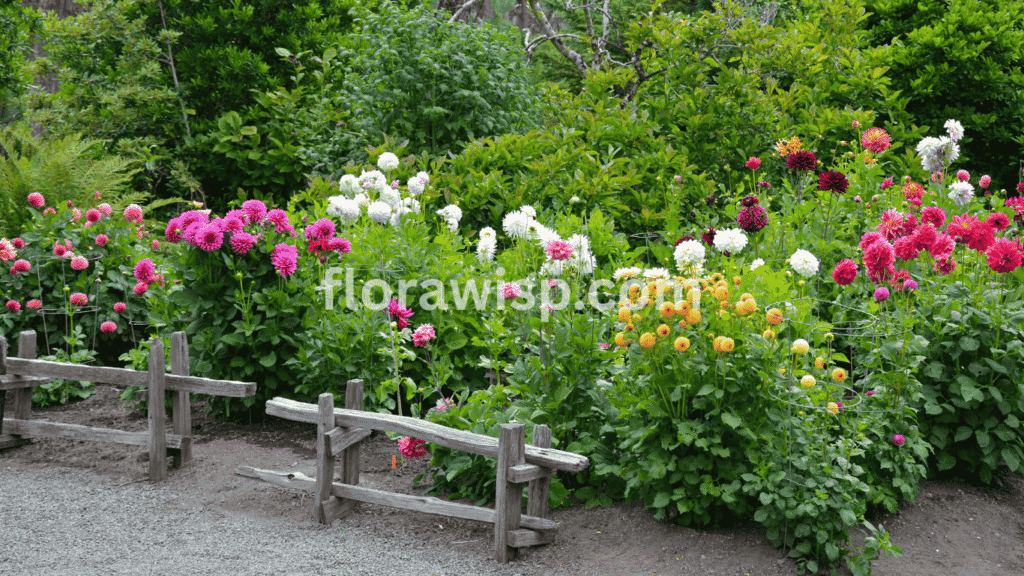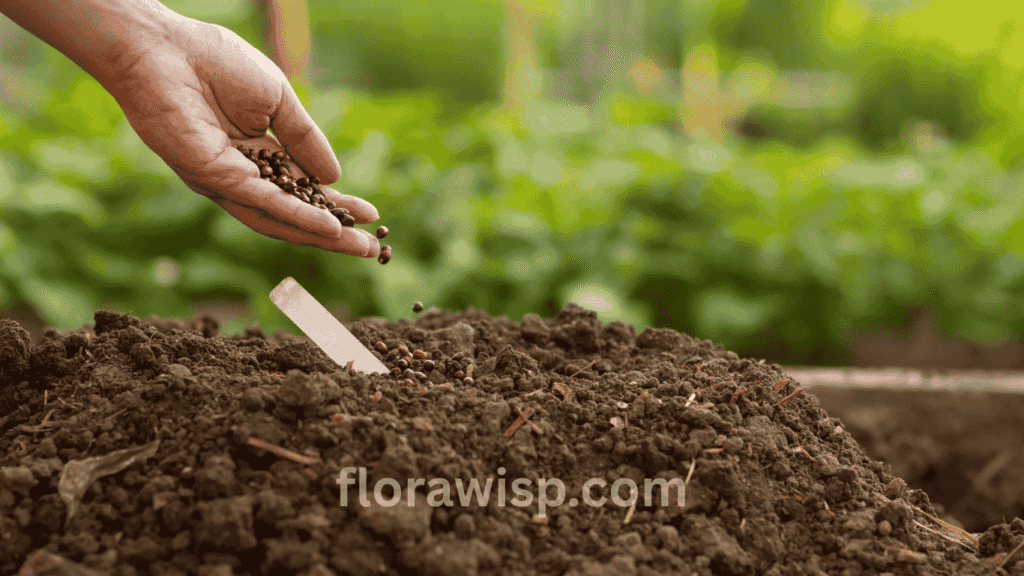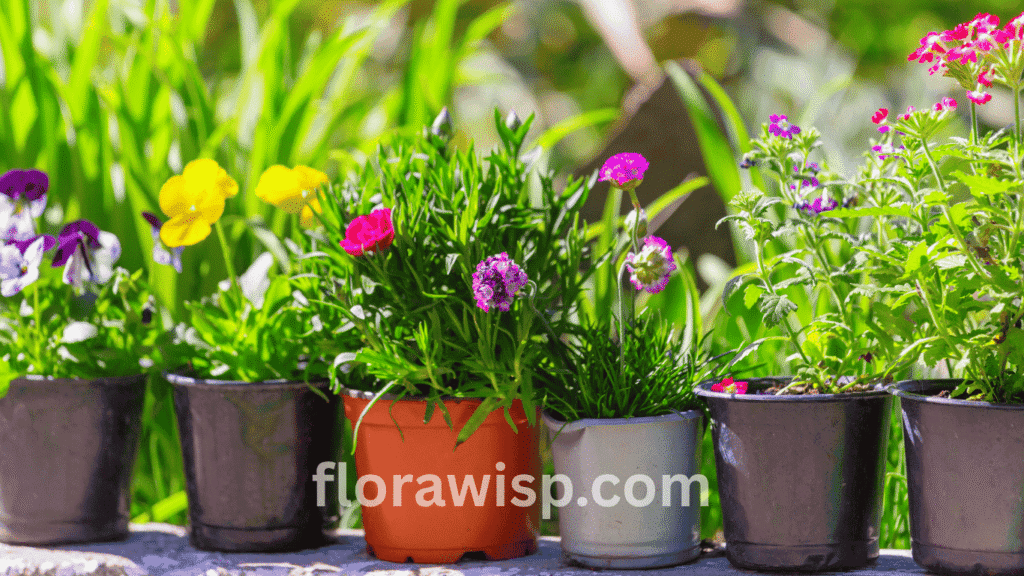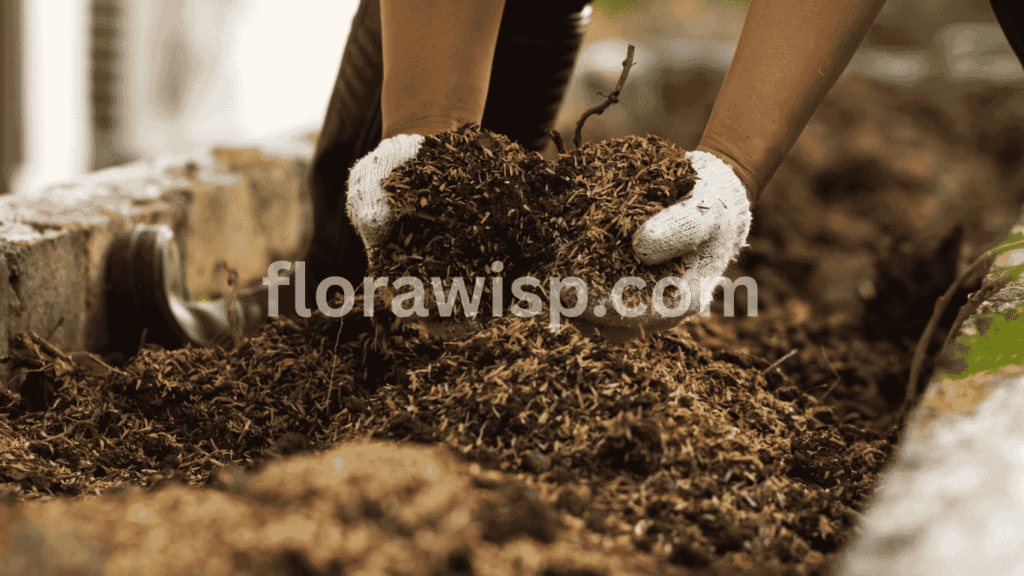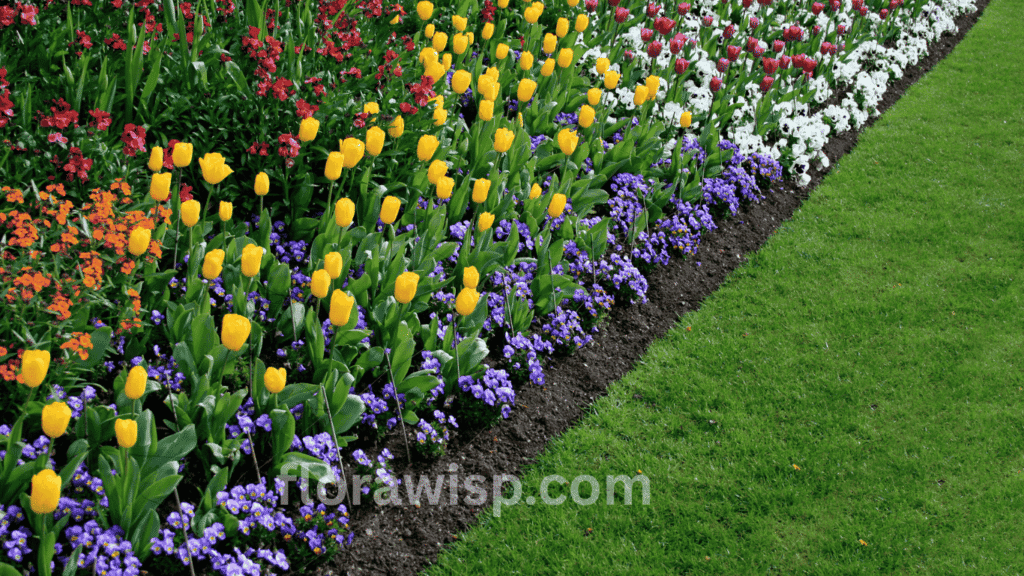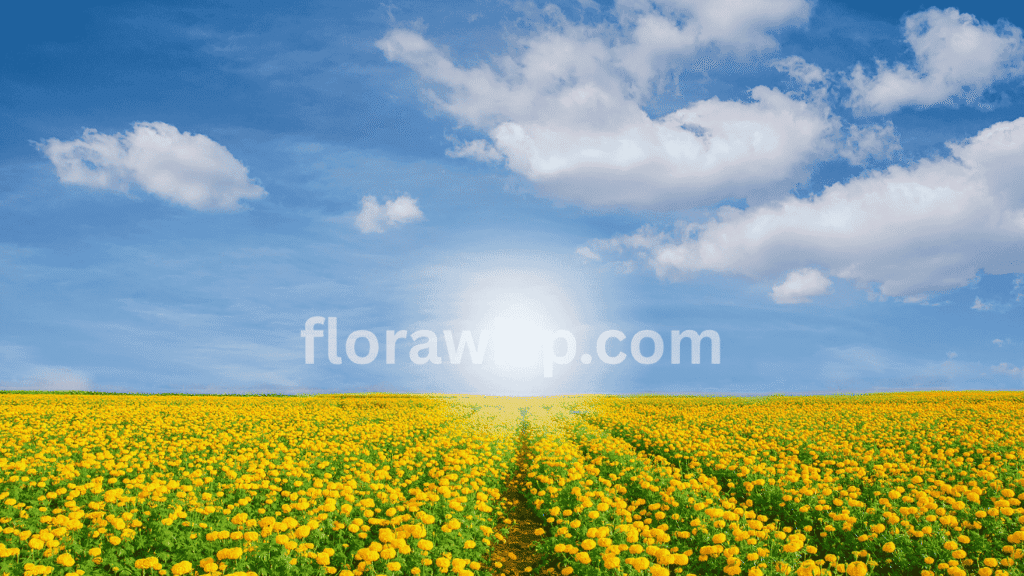Dahlia flowers have long been a centerpiece in my garden, and over the years I’ve come to see them as more than just striking blooms. Their vibrant colors and intricate petal patterns bring unmatched charm to summer and fall landscapes. But beyond their beauty, dahlias carry deep meaning that has made them a beloved flower across cultures.
Whether planted to brighten a garden bed, used in floral design, or cherished for their cultural symbolism, dahlia flowers always stand out as both a gardener’s delight and a timeless source of inspiration. For gardeners planning ahead, quick tips can make all the difference: plant tubers in well-drained soil after the last spring frost, give them full sun for bold blooms, water deeply once or twice a week, and pinch back young plants for bushier growth. In colder regions, dig up the tubers before winter, let them dry, and store them indoors to ensure they return with vigor the following year.
Growing dahlias isn’t just about adding color; it’s about cultivating joy. Whether you’re a beginner or an avid gardener, this flower has layers of meaning, care, and charm that make it worth every effort.
In This Guide
Dahlia Flower Meaning and Symbolism
Over the years of growing dahlia flowers in my own garden, I’ve come to appreciate that they are far more than just showy blooms. They carry a depth of symbolism that resonates across cultures making them as meaningful as they are beautiful.
Symbolism Across Cultures
In many traditions, dahlia flowers represent dignity, resilience, and strong commitment. This is one reason they’re often chosen for wedding bouquets, symbolizing eternal love, devotion, and the promise of standing together through all seasons of life.
Quick Reference Guide: Dahlia Flowers
Here’s a simple, mobile-friendly chart for quick guidance if you’re planning to grow dahlia flowers in your own garden:
| Feature | Details |
| Hardiness Zones | USDA Zones 8–11 (treated as perennials); Zones 3–7 (grown as annuals) |
| Bloom Season | Mid-summer through first frost |
| Planting Time | After the last spring frost, when soil reaches 60°F or warmer |
| Sunlight Needs | Full sun (at least 6–8 hours daily) |
| Soil Preference | Well-drained, fertile soil enriched with compost |
| Height Range | 1–6 feet depending on variety |
| Symbolism | Dignity, resilience, eternal love, and devotion |
| Popular Uses | Wedding bouquets, cut flowers, borders, containers, home décor |
Stunning Dahlia Flower Colors and Their Beauty
One of the greatest joys of planting dahlia flowers is discovering their astonishing range of colors. Over the years, I’ve experimented with nearly every shade in my own beds, and each hue brings its own mood, meaning, and garden performance.
Pink Dahlia Flower
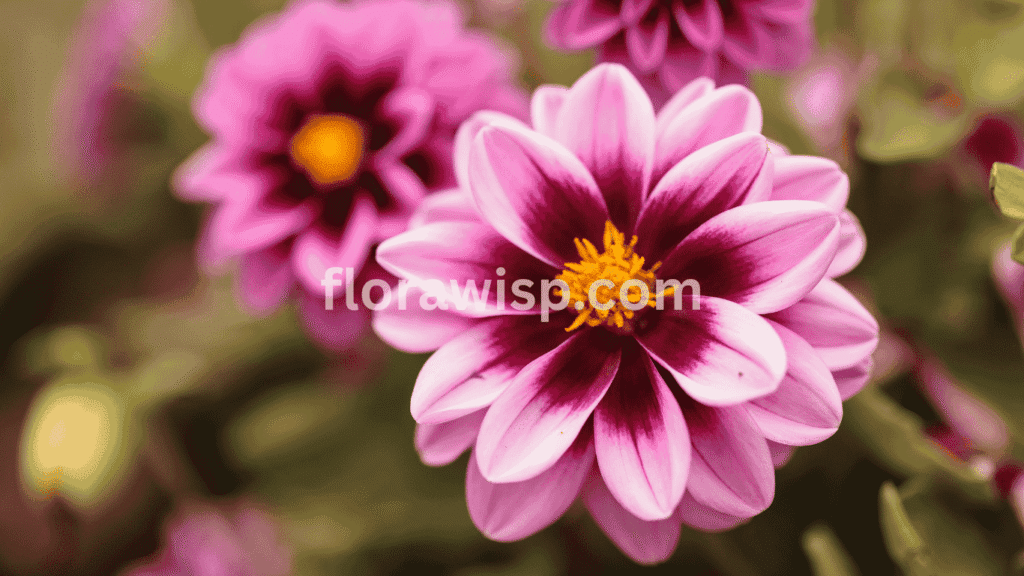
Description: Gentle and romantic, pink dahlias are often chosen for weddings and border plantings. I love how they soften the garden’s palette.
Features: Known for kindness and affection. Excellent for cut arrangements.
Bloom Time: Mid-summer through early fall.
Height: 2–4 feet depending on the variety.
White Dahlia Flower
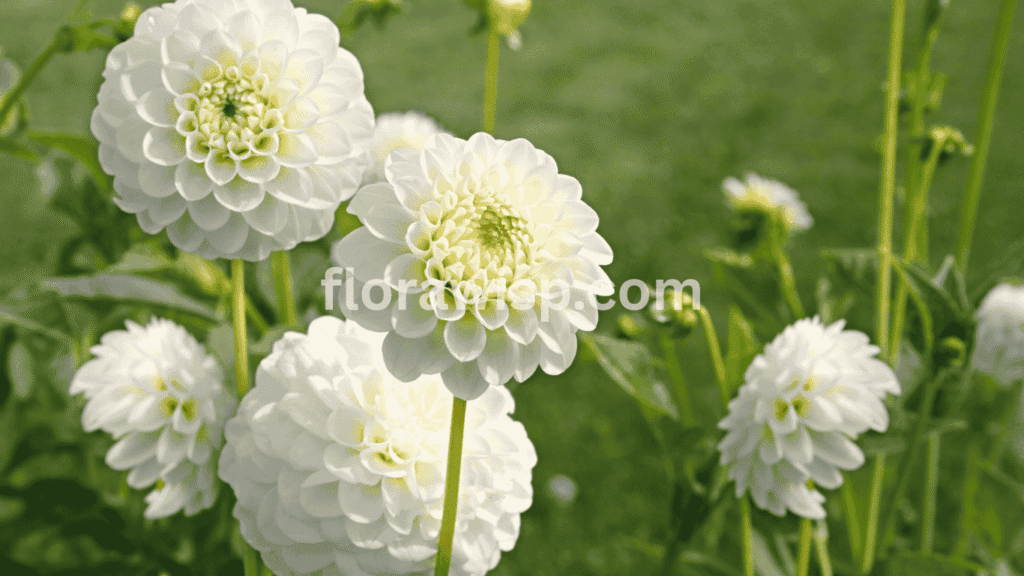
Description: With their pure, elegant petals, white dahlia flowers bring calm and grace to garden corners. They’re a favorite for wedding bouquets.
Features: Symbol of purity, peace, and timeless beauty.
Bloom Time: Summer through the first frost.
Height: 3–5 feet.
Purple Dahlia Flower
Description: These regal blooms add drama and depth to any planting. I often use them as a centerpiece in my dahlia beds.
Features: Represents dignity, creativity, and pride.
Bloom Time: Late summer to early frost.
Height: 3–6 feet.
Red Dahlia Flower
Description: Bold and fiery, red dahlias stand out instantly in any arrangement or garden border.
Features: Symbol of passion, power, and lasting strength.
Bloom Time: Summer through fall.
Height: 3–5 feet.
Orange Dahlia Flower
Description: Their vibrant tones remind me of autumn sunsets in my own backyard. They add warmth wherever they grow.
Features: Symbol of energy, joy, and excitement.
Bloom Time: Mid-summer until frost.
Height: 2–4 feet.
Yellow Dahlia Flower

Description: Bright and cheerful, yellow dahlia flowers light up beds like sunshine. I often plant them near patios for a welcoming effect.
Features: Symbol of happiness, positivity, and good luck.
Bloom Time: Summer through late fall.
Height: 2–5 feet.
Black Dahlia Flower
Description: Rare and captivating, black dahlias add mystery to the garden. Visitors always pause to admire their striking shade.
Features: Symbol of strength, uniqueness, and elegance.
Bloom Time: Mid to late summer through frost.
Height: 3–4 feet.
Blue Dahlia Flower
Description: Though uncommon, blue dahlias are highly sought after for their unusual tones.They bring a sense of rarity and fascination.
Features: Represents imagination, serenity, and curiosity.
Bloom Time: Late summer through fall.
Height: 2–3 feet.
Designing With Dahlia Flower Colors
From my experience, mixing several dahlia flower colors together creates breathtaking garden displays that bloom from mid-summer until frost. Whether planted in groups of bold reds and purples for drama, or softer pinks and whites for elegance, their versatility ensures that dahlia flowers always find a place in any U.S. garden.
Dahlia Flower Varieties
When I first started planting dahlia flowers, I was amazed by how many varieties exist. Each type offers its own personality in terms of size, texture, and bloom shape. Knowing the main types will help you design a garden that feels layered, colorful, and full of surprises all season long.
Dinnerplate Dahlia Flowers
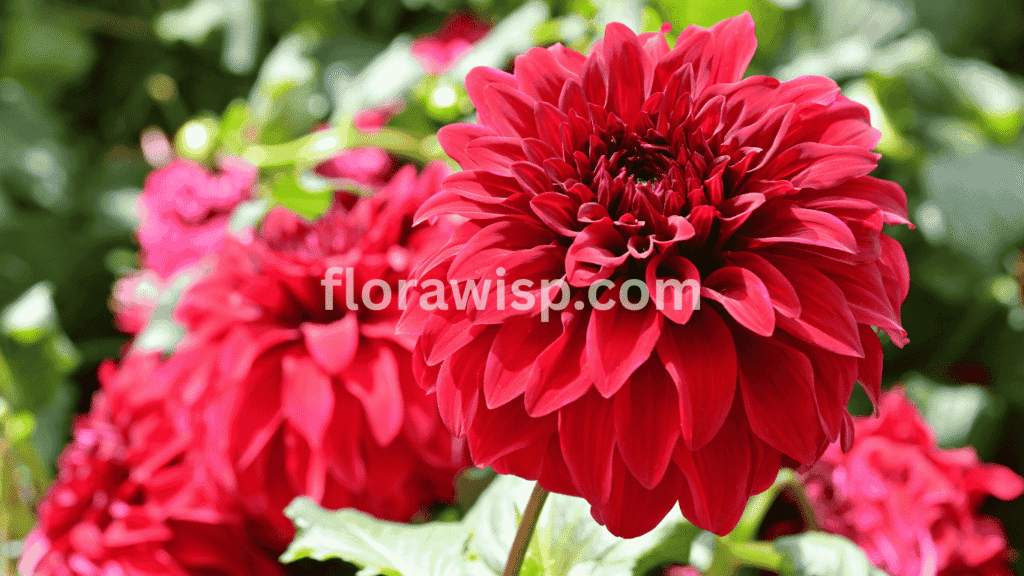
Description: Known for their enormous blooms, dinnerplate dahlias can easily measure 8–10 inches across. They’re always the stars of my late-summer garden.
Features: Large, vibrant flowers perfect for statement beds.
Bloom Time: Midsummer through frost.
Height: 3–5 feet.
Tip from my garden: Stake them early, as their heavy heads tend to droop after rain.
Pompon Dahlia Flowers
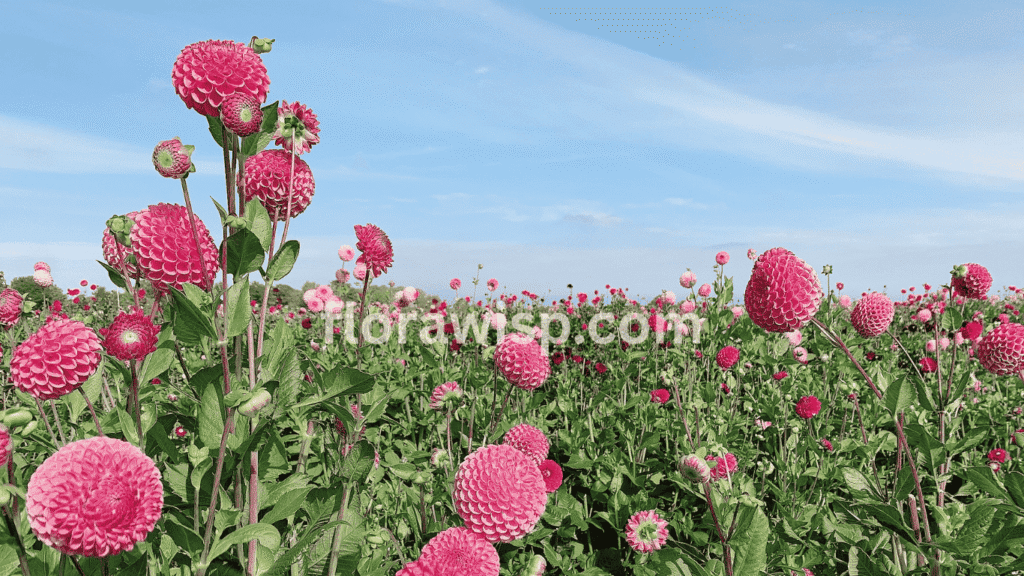
Description: These compact, globe-shaped blooms never fail to charm. I often use them for edging beds or filling bouquets.
Features: Rounded petals arranged in perfect symmetry.
Bloom Time: Summer through fall.
Height: 2–4 feet.
Tip from my garden: Their smaller size makes them excellent for windy spots where taller dahlias struggle.
Cactus Dahlia Flowers
Description: With narrow, spiky petals, cactus dahlias bring a bold texture that stands out among softer blooms.
Features: Exotic look with starburst-shaped flowers.
Bloom Time: Midsummer through frost.
Height: 3–6 feet.
Tip from my garden: I pair them with smooth-petaled dahlias for dramatic contrast in arrangements.
Mexican Dahlia Flowers
Description: The Mexican dahlia holds a special place in history as the national flower of Mexico and the ancestor of all modern dahlia hybrids. In my own experience, they are remarkably resilient.
Features: Hardy, adaptable, and culturally symbolic.
Bloom Time: Summer until the first frost.
Height: 4–6 feet.
Tip from my garden: Their adaptability makes them a great starter choice for new gardeners.
Growing different dahlia flower varieties together has allowed me to create beds layered with size, shape, and texture. Each type complements the other, and when combined, they offer a garden display that feels alive and ever-changing.
Dahlia Flowers in Bouquets
One of the biggest rewards of growing dahlia flowers is cutting them for use indoors. They are among the longest-lasting cut blooms I’ve ever worked with, often staying fresh in a vase for up to a week with proper care.
Dahlia Flower Bouquets
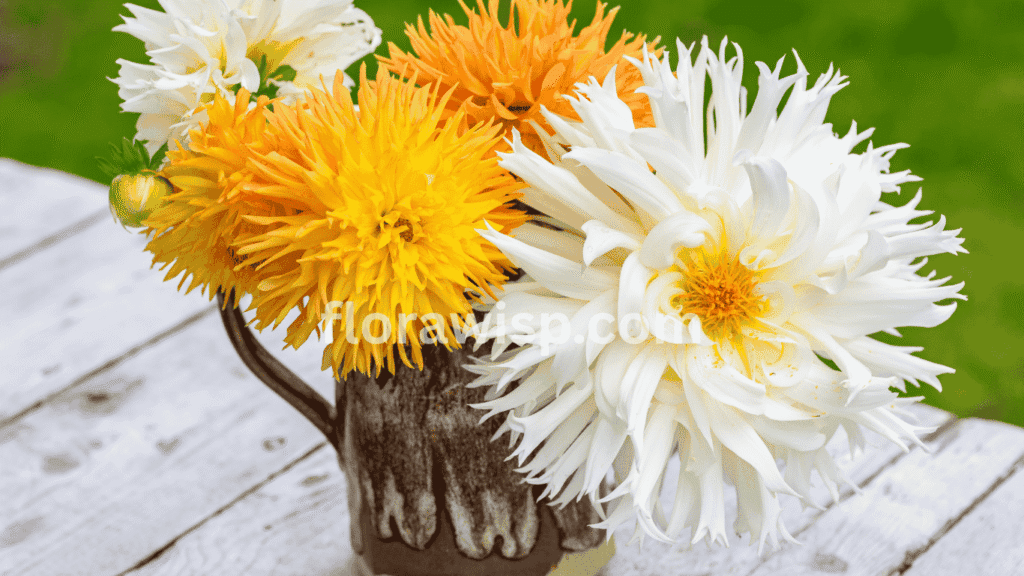
A freshly cut dahlia flower bouquet is a showstopper. Brides often choose soft pinks and whites for romantic weddings, while I’ve seen bold couples opt for dramatic black dahlia flower bouquets that symbolize mystery and strength. At home, I frequently cut a mix of colors from my garden, creating cheerful centerpieces that brighten the dining table.
Artificial Dahlia Flowers for Events
While nothing beats the fragrance and freshness of real blooms, I must admit artificial dahlia flowers have their place. They’re widely used in weddings, large events, and décor projects where longevity matters. High-quality artificial versions mimic the real thing beautifully and can be reused for years.
Dahlia Flower Delivery Services
For those who don’t grow their own, dahlia flower delivery services make it possible to enjoy these beauties year-round. Florists value them because they’re durable, symbolic, and highly customizable for arrangements. From my experience, gifting dahlias always brings a smile. Their wide range of colors ensures there’s a perfect bloom for every occasion.
Dahlia Flower Season: When They Bloom and Thrive
One of the reasons I fell in love with dahlia flowers is their incredibly long season. Unlike many perennials that fade too quickly, the dahlia flower season stretches from midsummer right through fall, rewarding gardeners with months of color.
Bloom Timeline Across U.S. Zones
In most U.S. zones, dahlias bloom from July until the first frost, which often comes in October or even November. That’s nearly four months of steady, show-stopping flowers. Gardeners in warmer southern states may see dahlias bloom earlier, while those in northern regions enjoy their peak color later in the summer.
How Long Do Dahlias Bloom?
When people ask me, “When do dahlias flower?” My answer is always the same: with proper care, they’ll keep blooming until frost. Each plant sends up waves of buds, ensuring continuous blossoms for weeks on end.
Seasonal Care Essentials
From my experience, the key to extending the dahlia flower season is consistent deadheading, regular watering, and weekly feeding with a balanced fertilizer. Once the soil reaches around 60°F in late spring, planting begins and from that point, it’s a countdown to months of rich blooms that brighten up every corner of the garden.
Planting Dahlias: Tubers, Bulbs, and Seeds
Over my years as a gardener, I’ve tried just about every way to grow dahlia flowers. While tubers remain the most reliable method, some gardeners also experiment with bulbs and seeds. Here’s what I’ve learned about how to plant dahlias.
How to Plant Dahlias
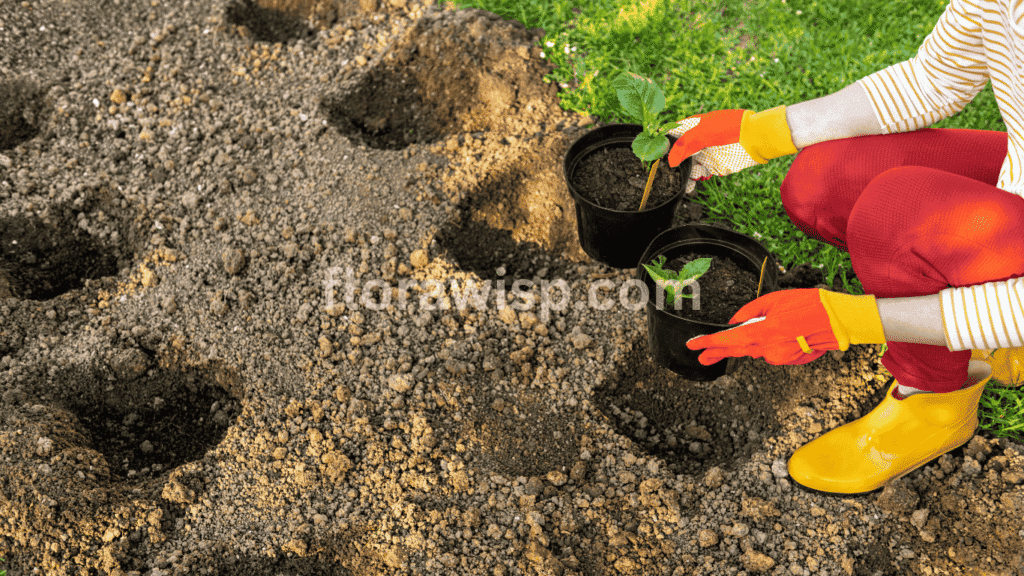
I always start with well-drained soil rich in compost. Dig a hole about 6 inches deep, place the dahlia flower tuber horizontally with the “eye” facing up, and cover with 3–4 inches of soil. Space them 18–24 inches apart to allow for airflow and growth. Within weeks, you’ll see healthy green shoots stretching toward the sun.
When to Plant Dahlias
The best time to plant dahlias is in late spring, once the soil temperature warms to at least 60°F and the risk of frost has passed. In my zone, that’s usually mid-May. Planting too early can cause tubers to rot in cold soil.
Dahlia Flower Tubers
Dahlia tubers are the most popular planting choice, producing strong, reliable blooms season after season. They store easily over winter and come back the following year when replanted.
Dahlia Flower Bulbs
Although many catalogs call them dahlia flower bulbs, dahlias technically grow from tubers. The term “bulb” is often used interchangeably, which confuses beginners. Simply remember: dahlias are tuberous plants, not true bulbs.
Dahlia Flower Seeds
Growing from dahlia flower seeds is exciting if you love experimenting with new varieties. However, they take longer to bloom compared to tubers and usually behave more like annuals unless saved carefully.
Quick Comparison: Tubers vs. Bulbs
| Feature | Dahlia Flower Tubers (True Growth) | Dahlia Flower Bulbs (Often Misused Term) |
| Growth Source | Tuberous root system | Technically not bulbs |
| Reliability | Very high, produces strong plants | N/A – often used as a marketing term |
| Bloom Time | Midsummer to frost | Same, but refers back to tubers |
| Best For | Consistent gardeners, cut flowers | Beginners confused by terminology |
From my experience, tubers are the tried-and-true choice. Seeds are fun for experimentation, and while you’ll see “bulbs” in catalogs, remember it’s really the tubers doing all the magic.
Dahlia Soil and Watering Requirements
Healthy soil and proper watering are the backbone of thriving dahlia flowers.
Best Soil for Dahlias
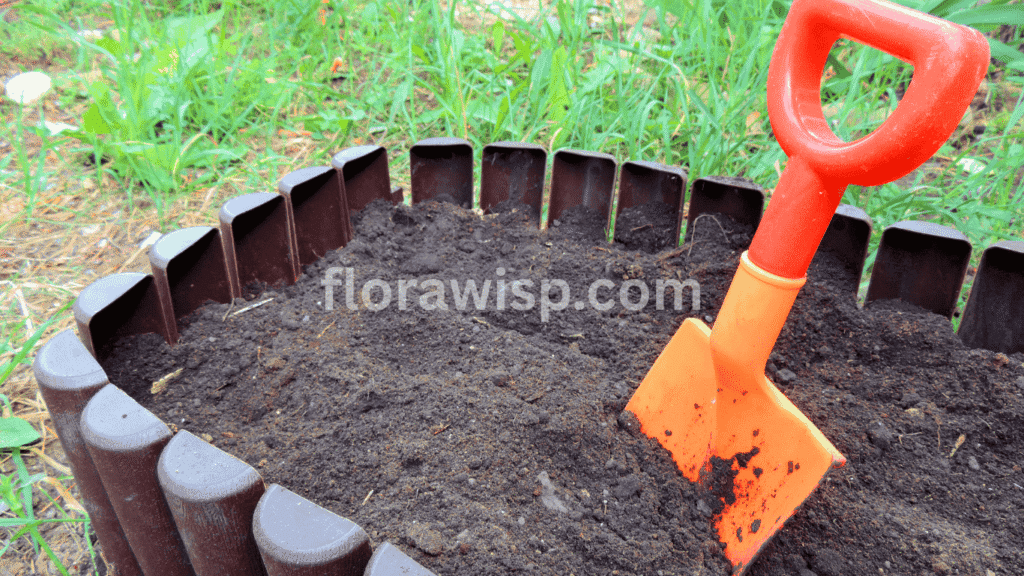
The best soil for dahlias is loose, well-drained, and rich in organic matter. A loamy mix enriched with compost provides the nutrients they need without becoming too heavy. Avoid clay-heavy soils, as they hold too much water and can cause tuber rot.
How to Prepare Soil for Dahlias
Before planting, I always focus on how to prepare soil for dahlias by working in aged compost or well-rotted manure. Good drainage is crucial if your soil tends to stay soggy, raise the beds or add sand to improve texture.
Soil Temperature for Dahlias
Timing is just as important as preparation. The ideal soil temperature for dahlias is at least 60°F. Planting in cold soil can stunt growth or rot tubers, so I always wait until late spring to ensure the ground has warmed.
Dahlia Water Requirements
Meeting dahlia water requirements is all about balance. In garden beds, I water deeply two to three times a week during hot summers, ensuring the soil stays moist but never waterlogged. For container-grown dahlias, I check daily since pots dry out faster. A layer of mulch helps keep moisture consistent while also cooling the soil.
Dahlia Flower Care for Healthy Growth
Once planted, dahlia flowers need consistent care to stay at their best. With the right routine, I’ve enjoyed weeks of continuous blooms and sturdy plants that easily become the stars of my garden.
Fertilizing for More Blooms
For reliable flower production, I use a low-nitrogen fertilizer every 3–4 weeks. Too much nitrogen creates leafy growth at the expense of flowers, so choosing the right balance is key.
Deadheading and Pruning
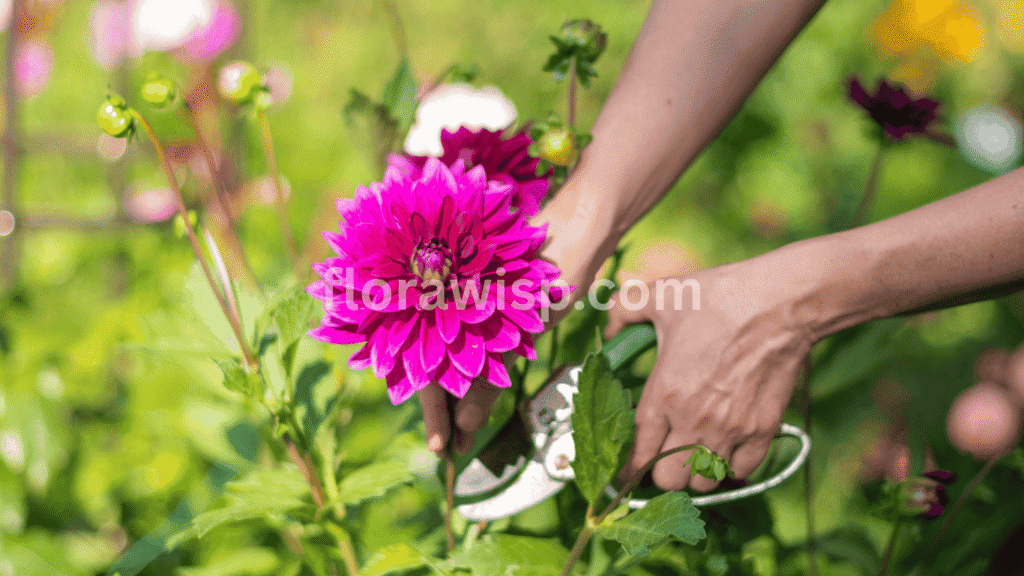
Deadheading removing spent blooms has doubled my flower output in some seasons. Simply cut the stem back to the next leaf node to encourage new buds. As for pruning, many gardeners ask me how to prune dahlias for winter. My method is simple: once frost blackens the foliage, I cut stems back to about 6 inches, gently lift the tubers, and store them in a cool, frost-free place until spring.
Managing Pests Naturally
Like all plants, dahlias attract a few pests, mainly aphids, earwigs, and slugs. I manage them by introducing beneficial insects like ladybugs, and by keeping the garden clean of debris where pests hide. A little vigilance goes a long way in protecting blooms.
Keeping Dahlias Blooming Longer
Consistent watering, proper feeding, and regular deadheading are the secrets to extending the season. With this care routine, my dahlias often bloom right up to the first frost, giving me armfuls of fresh cut flowers to enjoy indoors and share with neighbors.
By following these dahlia flower care essentials, you’ll not only keep your plants healthy but also enjoy a dazzling display year after year.
How to Overwinter and Store Tubers
One of the most frequent questions I hear from fellow gardeners is whether dahlia flowers can survive the winter outdoors. The answer depends on where you live. In warmer USDA Zones 8–10, dahlias can often stay in the ground with a thick layer of mulch for protection. But in colder climates (Zones 3–7), the frost will damage the tubers if they’re left outside, so lifting and storing them is essential.
Digging and Preparing Tubers for Storage
Once the first frost blackens the foliage, I carefully cut back the stems to about 6 inches. Using a garden fork, I gently lift the tubers, making sure not to pierce or snap them. In my experience, brushing off excess soil instead of washing helps prevent rot during storage. I always let the tubers dry for a day or two in a well-ventilated space before moving them indoors.
Best Way to Store Dahlia Flowers’ Tubers
Proper storage is the key to keeping dahlia flowers thriving year after year. I keep my tubers in a cool, dark place ideally between 40–50°F. Cardboard boxes filled with peat moss, vermiculite, or even wood shavings work well to prevent shriveling. Over the years, I’ve learned to check them once a month; a quick inspection helps me catch any signs of rot early.
Why Overwintering Matters
From my own garden, I can tell you that overwintering tubers makes a huge difference. Some of my favorite dahlia flowers have been grown from the same tubers for over five seasons, and the blooms only get bigger and more vibrant each year. With just a little extra effort in winter care, you’ll enjoy healthier plants and more abundant flowers when spring returns.
FAQs
Q. What does a dahlia flower look like?
A dahlia flower looks like a layered burst of petals forming round or spiky shapes, often compared to fireworks frozen in bloom. With over 40 species and countless hybrids, they range from small ball shapes to big dahlia flowers that span 10 inches wide.
Q. When do dahlias flower?
Dahlias flower from mid-summer to the first frost, typically July through October in the U.S. In warmer states, blooms may start earlier. Proper planting time and care extend the flowering season.
Q. What kind of soil do dahlias like?
Dahlias like well-drained, fertile soil rich in organic matter. I recommend a loamy mix that holds moisture without becoming soggy, ensuring healthy root development.
Q. How often do you water dahlias?
Water dahlias deeply twice a week during summer. Overwatering can cause tuber rot, so it’s important to keep soil moist but not waterlogged.
Q. What to plant with dahlias for continuous blooms?
For continuous blooms, pair dahlias with companions that extend the season and support healthy growth. Cosmos, zinnias, and marigolds thrive alongside dahlias, attracting pollinators while filling gaps when dahlias rest. Salvias and verbenas provide vertical interest and nonstop color. Together, these combinations keep your garden vibrant from early summer until the first frost.
Q. How to store dahlia bulbs for the winter?
Store dahlia tubers (often called bulbs) in peat moss, vermiculite, or sawdust inside a ventilated box. Keep them in a cool area around 40–50°F.
Q. Can dahlias survive winter?
Dahlia flowers can survive winter only in frost-free zones. In colder regions, tubers must be dug up and stored, then replanted in spring for continued growth.
Conclusion
Dahlias flowers not just as plants, but as companions in my gardening journey. They bring unmatched color, versatility, and charm to any yard. From dahlia flower symbolism to their endless varieties, they offer something for every gardener to love.
If you’ve never tried growing dahlia flowers, I encourage you to give them a spot in your garden this season. With the right soil, care, and seasonal protection, they’ll reward you with months of blooms and years of gardening joy.
References
American Dahlia Society – Fundamentals of Growing Dahlias
Penn State Extension – The Dirt on Dahlias
GardeningKnowHow – Dahlias Not Blooming
Gardener, M.Sc. Horticulture
Elara Bennet is a gardening writer from Austin, TX, passionate about sustainable lawns and blooms. Read full bio →

